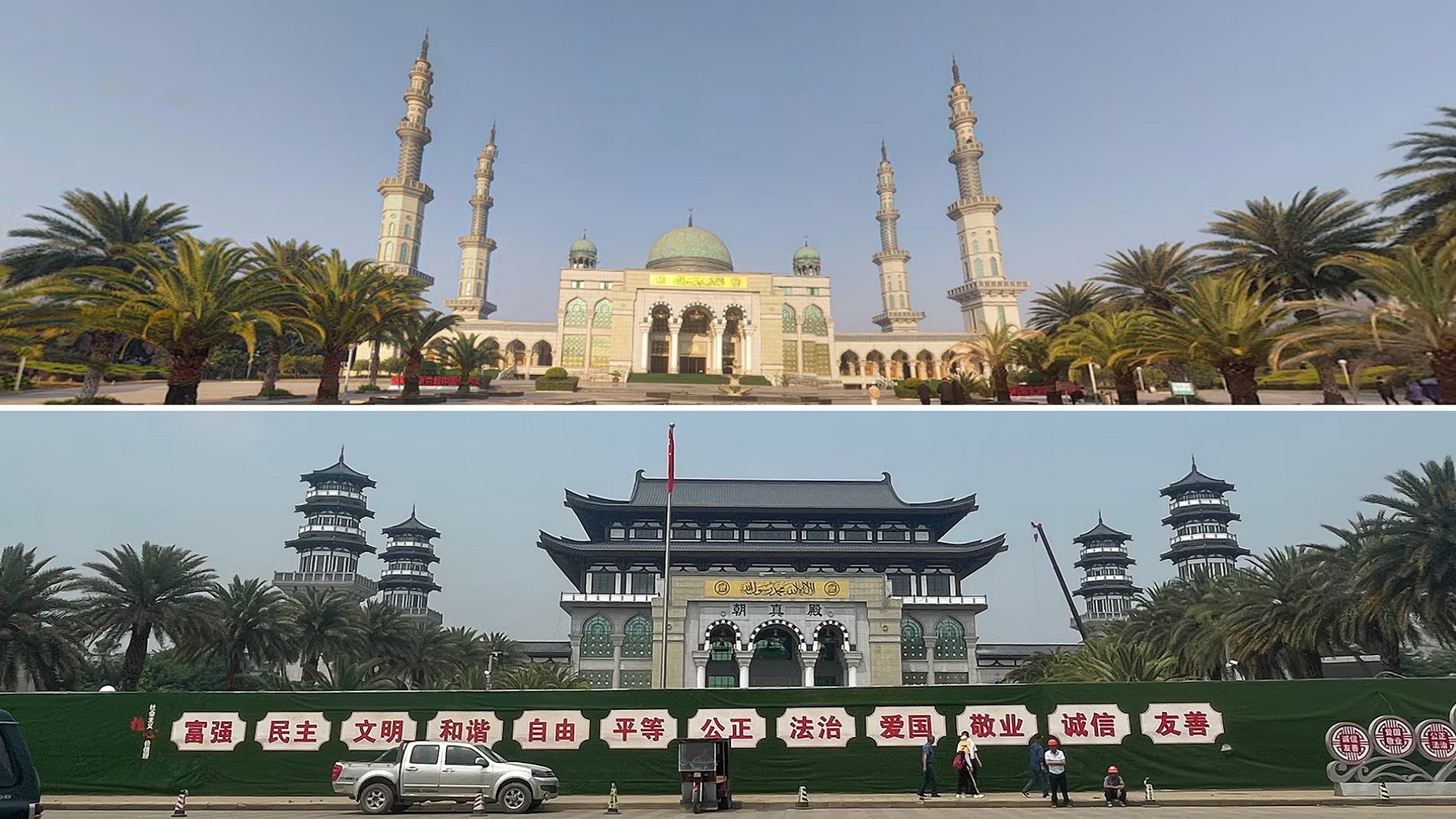Hundreds of mosques in China have been closed by the country’s authorities. Again, in some places, the extensive infrastructure of the mosque has brought great changes. In this sequence, the appearance of a large mosque built in the Arab style has been changed. The dome and minaret were removed and a Chinese-style roof was added.
According to a report by The Guardian, Shadian is a small town in China’s southwestern Yunnan province. The largest and grandest mosque in the city is the Shadian Grand Mosque. It is the last major mosque with Arab features in China.
Recently the mosque has been radically renovated. As part of the renovation, its domes and minarets were removed and replaced with Chinese-style roofs. Experts say that this completes the government’s campaign to Chineseize the places of worship of the Muslim minority.
Until last year, the green dome was adorning the 21 thousand square meter mosque building. On top of which there was a crescent and four small domes surrounded by tall minarets. Also seen in the 2022 satellite image, the entrance to the mosque is decorated with a large crescent moon and star made of shiny black tiles.
But this year’s satellite images show the mosque has been stripped of its dome and minaret and replaced with a Chinese-style pagoda roof. The four high minarets at the front and back of the mosque have been removed and a relatively small pagoda tower has been installed there.
READ MORE : Iran gave new information about Raisi’s helicopter crash
Only the crescent and star of the mosque’s entrance tiles are visible as end marks. Looking at the before and after pictures of the mosque, one would have a hard time realizing that it is the same picture of the mosque.
The Naziaying Mosque, another historic mosque in Yunnan less than 100 miles from Shadian, has also undergone recent renovations to remove Arab features.
When part of the 14th-century mosque was being demolished last year, hundreds of worshipers protested. At that time, they clashed with the police.
Since 2016, the ruling Chinese Communist Party (CCP) has maintained strict pressure on religious and ethnic minorities in China, particularly Muslims. At that time, Chinese President Xi Jinping ordered the sinicization of religion. Since then, the number of mosques has been reduced or changed.
In April 2018, the Chinese government ordered strict controls on the construction and layout of Islamic religious buildings. It also revealed a five-year plan. Part of the plan was to resist ‘foreign architectural styles’ and adapt Islamic architecture to Chinese characteristics.
According to a leaked memo from the Chinese Communist Party, local authorities were ordered to ‘follow the policy of demolish more and build less’.
Ruslan Yusupov, an anthropologist at Cornell University in the United States, said that the radical transformation of these two large mosques is a great example of the ‘Chineseization of Islam’ campaign that has been going on for the past few years. Although small Arab-style mosques still remain in the villages, it will be difficult for the local community to oppose their Chineseization.
Hannah Thekar, a professor of Islamic history and historian at Plymouth University in China, said that the Chineseization of mosques is progressing in all provinces. Yunnan, one of Beijing’s farthest provinces, has been the latest raid. Ma Xu, a New York-based Chinese rights activist, said the Chinese government’s reforms were “a clear message to destroy religion and ethnicity.”

THE NAIS IS OFFICIAL EDITOR ON NAIS NEWS

